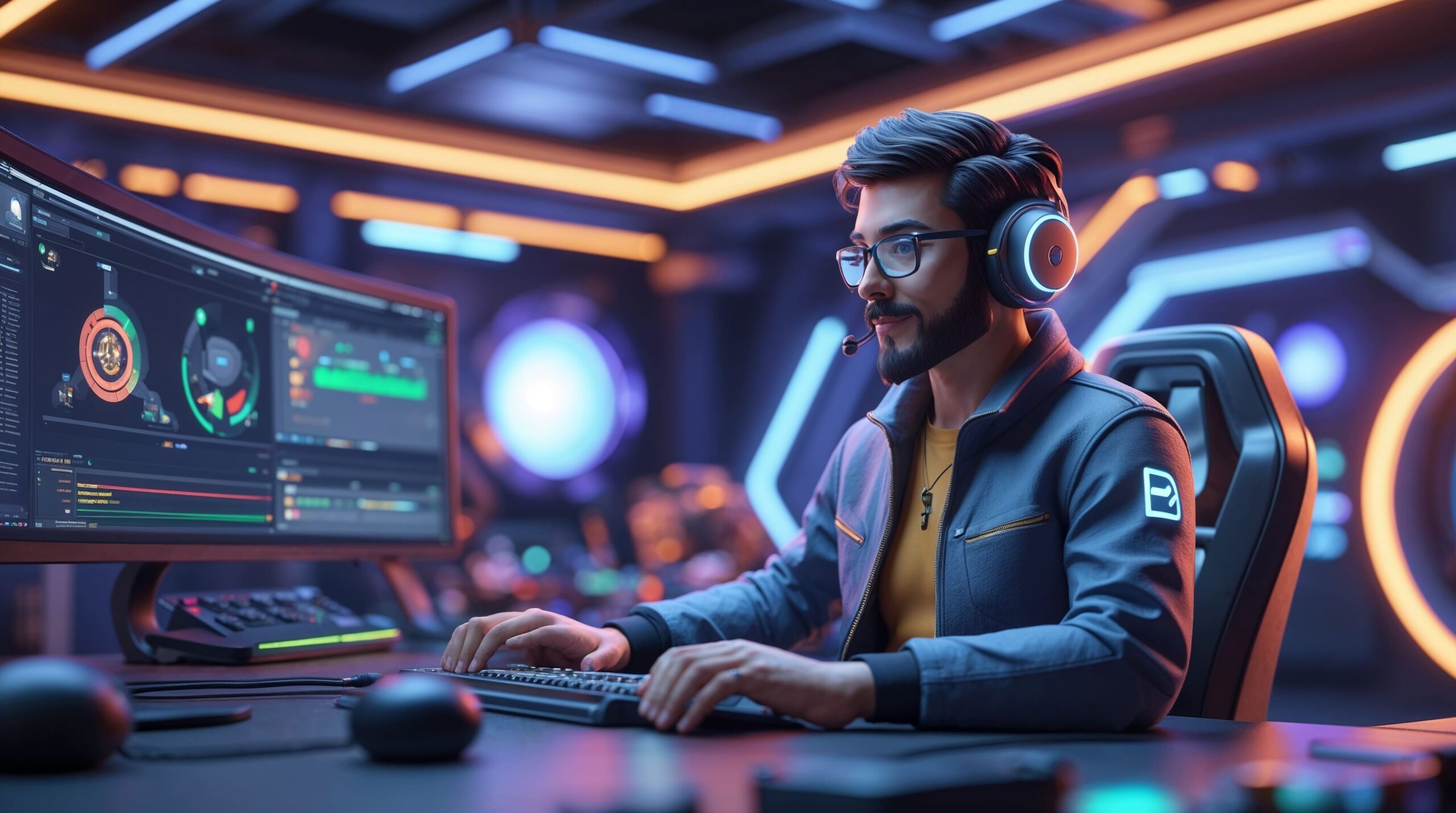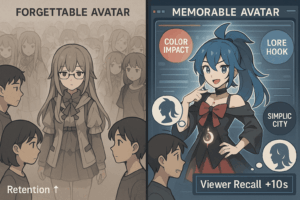The game development landscape is changing fast. The vast majority of game developers are shifting away from traditional 3D workflows, embracing AI systems, machine learning, and natural language processing to streamline the process. With evolving technology and increasing demands, this transition is no longer a choice—it’s a necessity.
From PC to Xbox and PlayStation, modern games require higher-quality models, faster workflow, and seamless automation. Game developers need solutions that can support large-scale projects while optimizing budgets and timelines. This shift is not just about efficiency—it’s about staying ahead in an industry that is becoming more competitive by the day.
The Evolution of 3D Workflows in Game Development
In the past, creating high-quality 3D models for games was a labor-intensive process. Artists would manually sculpt, texture, and animate characters and environments, often taking weeks or months to complete a single asset. The reliance on human effort limited efficiency, and production bottlenecks were common.
Today, game developers are leveraging AI systems and machine learning to automate complex tasks. These technologies can generate detailed 3D models, optimize textures, and even enhance animations with minimal human intervention. The ability to speed up the development process without sacrificing quality is a game-changer.
How AI and Automation Are Reshaping 3D Game Development?
AI and automation are revolutionizing 3D game development by enhancing efficiency, reducing budget constraints, and enabling teams to focus on creativity. From AI-powered asset generation to natural language processing for design, these technologies streamline the workflow and push the industry forward.
1. AI systems Asset Generation
The demand for high-quality art in games is greater than ever. Game developers now use AI systems to create realistic textures, generate procedural landscapes, and even automate character design. This allows teams to focus on more creative aspects of game development, rather than spending time on repetitive tasks.
For example, AI tools can analyze reference images and generate 3D assets with accurate proportions and details. This dramatically reduces the time required for asset creation and ensures consistency across different game elements.
2. Natural Language Processing for Design Guidance
One of the most interesting advancements in AI systems is the use of natural language processing (NLP) for design assistance. Developers can describe a scene or a character in plain English, and AI will generate a base model that fits those specific needs.
This technology is particularly useful for smaller teams and indie developers who may lack the resources to hire full-scale 3D art teams. Instead of spending months designing assets from scratch, they can use AI systems to streamline the process and focus on refining the final product.
3. Smarter Animation and Motion Capture
AI-driven animation tools are transforming the way characters move and interact in games. Traditional motion capture required expensive setups and extensive installation, but modern systems can now analyze patterns from existing animations and generate new, lifelike movements.
These AI-driven solutions are being adopted across different industries, from AAA game developers to indie studios, enabling a smoother workflow and better animation quality.
The Role of Machine Learning in 3D Game Workflows
Machine learning is transforming 3D game development by automating complex processes, improving efficiency, and enhancing gameplay experiences. From optimizing performance to personalizing content, AI-driven solutions are redefining how game developers create and refine their games.
1. Optimizing Game Performance
Every PC, Xbox, and PlayStation title must run smoothly across various hardware configurations. Machine learning helps game developers optimize their games by analyzing data and automatically adjusting graphics settings based on user hardware.
For instance, AI-powered upscaling techniques like NVIDIA DLSS allow games to maintain high visual quality while improving frame rates. This ensures a better play experience without overloading the system.
2. Automating QA Testing
Testing a game is one of the most time-consuming tasks in game development. AI-driven automation tools can now run through dozens of test scenarios, identifying bugs and performance issues without requiring manual intervention. This speeds up the review process and helps game developers release more polished titles.
3. Personalizing Player Experiences
AI systems are also being used to tailor in-game experiences to individual users. By analyzing data from previous playthroughs, AI can adjust difficulty levels, recommend custom challenges, or even create procedural storylines that adapt to a player’s play style.
Why the Vast Majority of Developers Are Making the Shift?
The transition to AI-driven game development isn’t just a trend—it’s a necessity. The vast majority of modern studios recognize that relying solely on traditional methods limits efficiency and increases production costs.
1. Cost Savings
Developing high-quality 3D models and assets requires significant time and resources. By integrating AI-driven tools, game developers can cut down production costs while maintaining high visual quality.
2. Faster Turnaround Times
With the help of machine learning and automation, game developers can speed up the entire workflow. This means quicker game release cycles, which is essential in an industry driven by tight deadlines and high competition.
3. Improved Scalability
Modern AI systems allow game developers to work on large-scale projects without exponentially increasing their team sizes. Whether working on an open-world game or a fast-paced multiplayer shooter, AI-driven solutions enable teams to adapt to growing project requirements without sacrificing performance.
The Key Factors Driving AI Adoption in 3D Game Development
The gaming industry is evolving rapidly, and AI-powered solutions are at the head of this transformation. One of the key reasons game developers are embracing AI is its ability to streamline workflow, automate tedious tasks, and improve overall success. From generating free assets to enhancing animation quality, AI is proving to be a game-changer.
Here’s how AI is reshaping game development:
AI is transforming game development in remarkable ways. AI-driven media tools optimize game mechanics for different genres, ensuring engaging gameplay and seamless execution. Developers can access a vast collection of AI-generated assets, instantly downloading high-quality textures, models, and environments. Key elements like automation, AI-powered analytics, and real-time data integration contribute to overall game success. Features such as procedural generation and adaptive storytelling give studios a competitive edge, while AI-powered stream processing and animation tools help reduce costs by minimizing the need for large in-house teams. AI also enhances sales potential by analyzing player behavior and recommending monetization strategies suited to different game categories. Additionally, it refines game design theory, enabling smarter AI-driven NPC behavior and player interactions. As AI continues to evolve, it is strengthening the connection between developers and players, driving game development toward a more efficient, immersive, and scalable future.
Challenges and Concerns in AI-Driven Game Development
Despite its advantages, AI-driven game development comes with its own set of challenges. Many studios still face concerns regarding AI-generated assets lacking the human touch or AI-driven animation missing emotional depth.
Additionally, integrating AI into existing systems can require specialized expertise, which not all game developers possess. The business side of game development also needs to consider ethical concerns, such as ensuring AI tools do not replace human artists but instead support them in their creative roles.
The Future of 3D Game Development
Looking ahead, AI-driven solutions will continue to shape the future of game development. Machine learning, natural language processing, and AI systems will become even more advanced, allowing developers to push creative boundaries further than ever before.
Major platforms like Xbox, PlayStation, and PC will benefit from AI-enhanced game engines that streamline the development process and improve overall gameplay experiences. AI-powered systems will enable real-time world generation, advanced physics simulations, and even procedural story creation based on player interactions.
Conclusion
The shift away from traditional 3D workflows is already happening. The vast majority of game developers are embracing AI systems, machine learning, and natural language processing to create better games, optimize workflow, and improve overall efficiency. Whether it’s automating asset generation, enhancing animation, or optimizing performance across PC, Xbox, and PlayStation, AI-driven solutions are reshaping the industry. The future of game development belongs to those who adapt to these emerging technologies and use them to push creative limits. Want to stay ahead in 3D content creation? Discover how 3DAiLY’s proprietary technology can revolutionize your workflow—faster, cheaper, and better. Let’s talk today!



